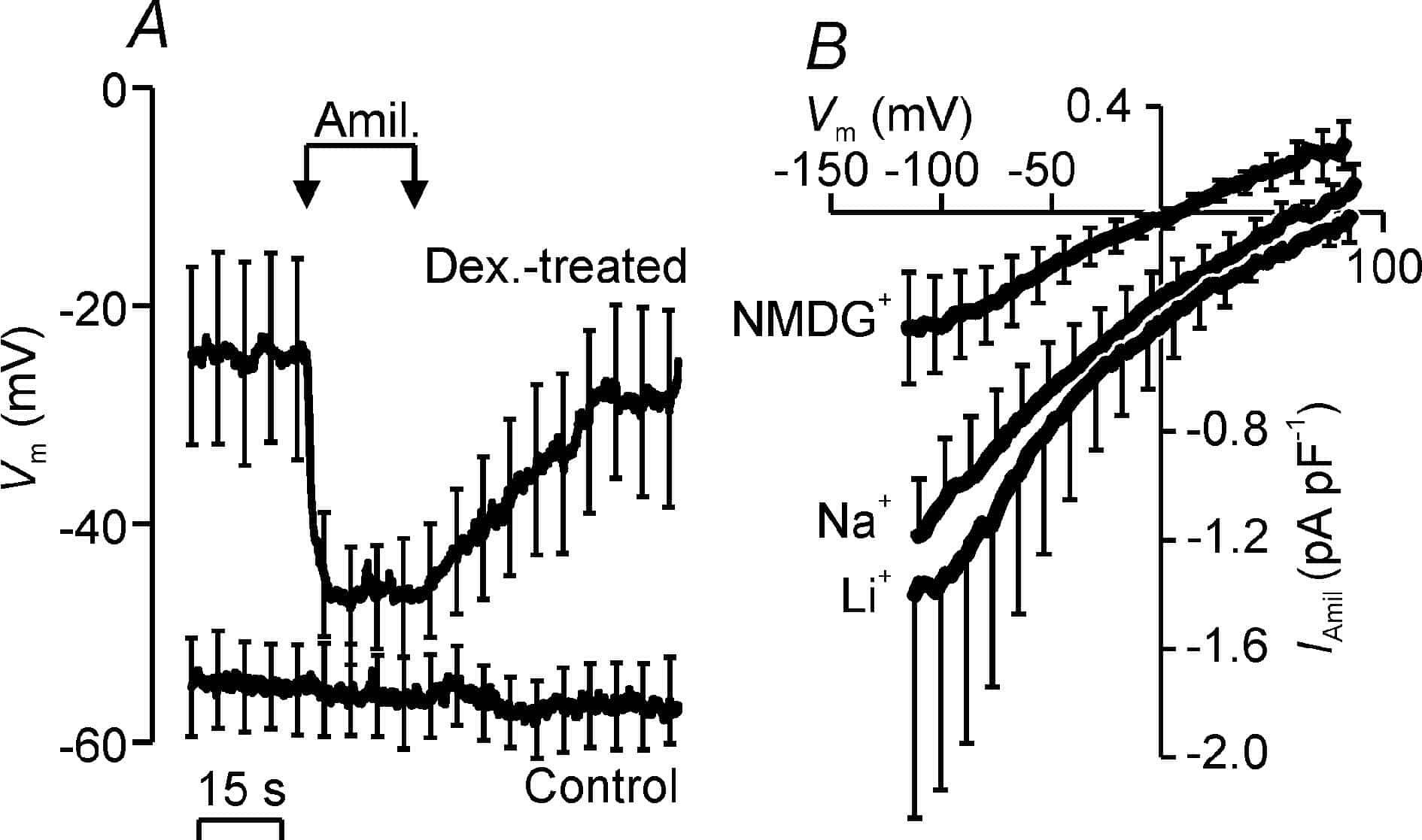Airway epithelia absorb Na+ from the airway surface liquid and this process is vital to lung function, develops in response to increased fetal levels of glucocorticoids, thyroid hormone and adrenaline (reviewed by Olver et al. 2004), and is dependent upon epithelial Na+ channels (Hummler et al. 1996). These channels are composed of three subunits (α, β and λ-ENaC) that form a selective Na+ conductance if co-expressed in Xenopus oocytes. However, several authors have failed to identify such selective Na+ channels in airway epithelia and Na+ influx in these cells has thus been attributed to non-selective cation channels, which may be formed by the ENaC subunits in an alternative, stoichiometric arrangement. This prompted us to explore the effects of dexamethasone upon Na+ conductance in H441 airway epithelial cells.
Measurements of Vm (Fig. 1A) showed that dexamethasone caused amiloride-sensitive depolarisation and voltage clamp studies (Fig. 1B) showed that the amiloride-sensitive currents in these cells normally reversed at 65.8 ± 11.8 mV, a potential close to ENa (67.9 mV). Lowering [Na+]o to 10 mM, the concentration in the pipette solution, by NMDG+ substitution shifted Vrev to 5.3 ± 0.4 mV whilst replacing Na+ with Li+ caused a rightward shift in Vrev to 90.0 ± 31.8 mV (Fig. 1B). Dexamethasone thus evokes the expression of a selective Na+ conductance with a substantial permeability to Li+ and this conductance is thus similar to that seen in oocytes co-expressing α, β and λ-ENaC. These data (see also Voilley et al. 1994) thus suggest that selective, rather than non-selective, Na+ channels permit Na+ entry in airway epithelia.
This work was supported by grants from the Wellome Trust, Tenovus Scotland and the Dale Fund.

